Frontliner Paints Through COVID-19
By Jacqueline Pflaum-Carlson | January 6, 2021
In late Februrary, health care workers and lay people alike heard the first inklings of the presence of the COVID-19 virus on the shores of the continental US. Physician groups across social media were sounding the alarm and posting photos of their tired, exhausted faces in states like Washington and Oregon.
Affected physicians were providing anecdotal advice and recommendations based on their experience and the limited information we had from China. We knew it was coming. We knew that we were standing on the edge of something big, scary and explosive in the medical community, but I was watching a lot of my friends and family on social media criticize and attack those who supported the cancellation or scaling down of large group gatherings. I was anxious, frustrated, disappointed, aggravated and maybe a little too optimistic that we could snuff out the flame before the bomb went off.
I started painting to calm myself and realized I could use those images to spread a message. Nobody wants to read a long, soapbox speech on social media; society doesn’t generally have the attention span for such grandiloquence. Images, however, can be powerful and gripping. Through this power they can impact a wider audience. If I could catch the attention of even a small group of people who disagreed with me and would normally ignore oppositional viewpoints, I would be doing something valuable.
Once the virus was in Detroit, there was no escaping it. It was everywhere, all at once. Even the patients whom we thought were simple and uncomplicated were later testing positive for COVID. We had no rapid testing capabilities, limited personal protective equipment, limited anecdotal knowledge – it felt like we were flying blind. As physicians, we are trained to provide medical care using evidence and leaning on the experience of our mentors, in this case we had very little experience and even less evidence. We did our best to protect ourselves, our patients, and our families while everything seemed to be burning down around us.
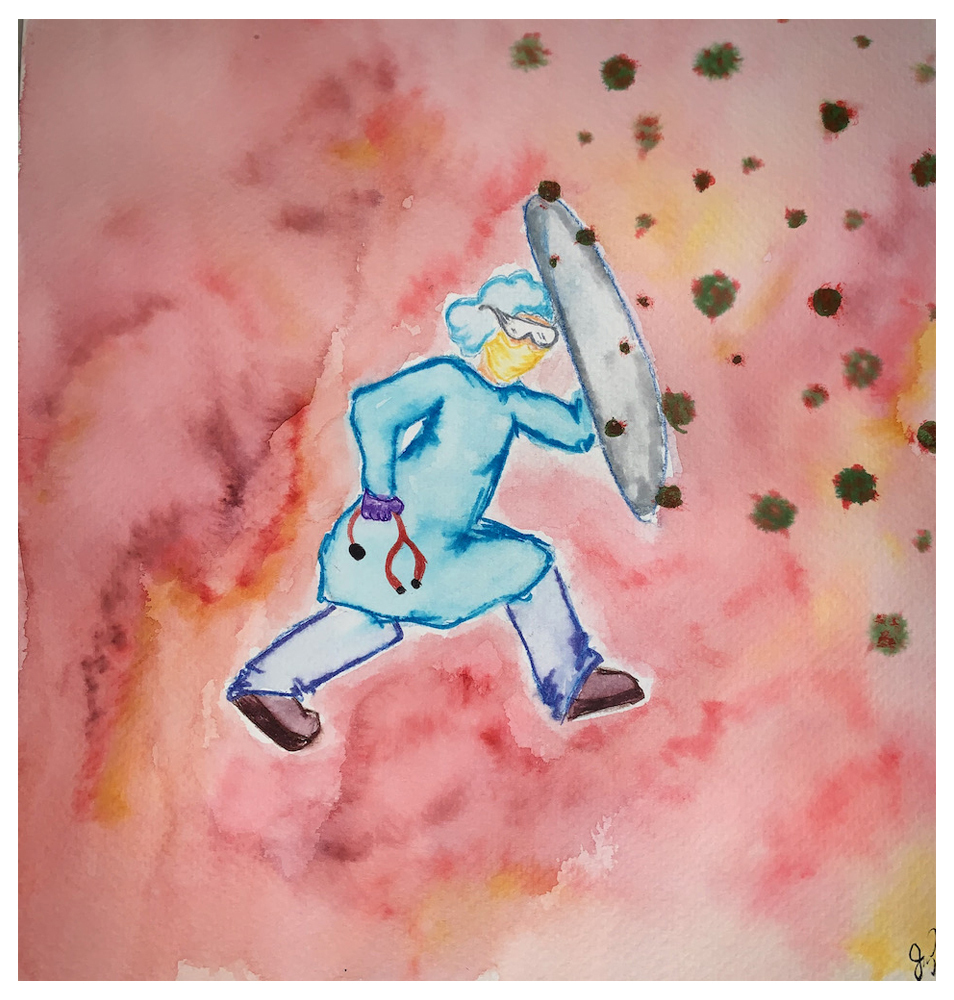
Hold the Line, Arteza Watercolor Brush Pens on Strathmore watercolor paper, 9″x12″ 2020.
As protective orders and lockdowns were put into place, we began the tremendous and tenuous efforts of sustaining life in the era of COVID19. Patients were on life support and their organs were failing. Because of the novelty of the virus, we lacked evidence-based treatments. Every day it seemed that there was a new trial, a new drug, a new theory. Some of the things we tried would make patients better; some wouldn’t do much at all. It felt as if we were carrying our patients on a tightrope, across a deep chasm, with no end in sight.
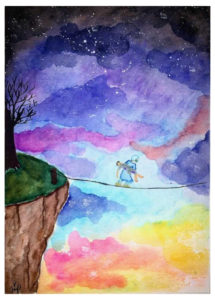
Tenuous Tenacity, Arteza Watercolor Brush Pens on Strathmore watercolor paper, 9″x 12″ 2020
Medicine can be gut wrenching. Grieving and loss do not stop with the ones who we lost, and we lost many. Entirely too many. The impacts of lost lives are felt by everyone who touches them and who was touched by them, including the healthcare workers who sat by their bedsides as their bodies failed. We took turns supporting each other and hands were extended from all corners of the hospital.
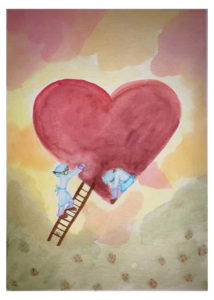
Let Me In to Save You, Arteza Watercolor Brush Pens on Strathmore watercolor paper, 9″x12″ 2020
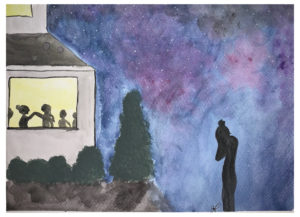
The Party, Arteza Watercolor Brush Pens on Strathmore watercolor paper, 9″x12″ 2020
The pandemic rages on, with new threats and new deaths. We are reminded of the layers of humanity as we experience a persistent barrage of complications. The disproportionate deaths of black and brown people in communities ravaged by the virus; the ignorance and accusations of falsifying hospital accounting to fit a narrative that minimizes something to which many of us have borne witness and now bear the scars. The refusal to wear masks, violent and nonviolent protests, and the seemingly worsening deafness of those who only want to hear the arguments supporting their beliefs. The pandemic highlighted our strength when we all worked together, and as a result, magnified our weakness when we refused to listen and learn.
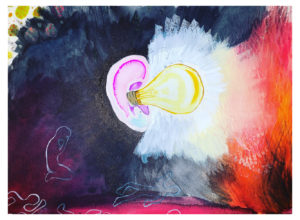
Listen!, Watercolor plus gauche on Strathmore watercolor paper, 9″x12″ 2020
Click here to watch Jacqueline in a Henry Ford Health video.
Copyright © 2021 Jacqueline Pflaum-Carlson
Since 2010, Jacqueline Pflaum-Carlson MD, has been an Emergency and Critical Care Medicine physician in Detroit, Michigan. She is also a mom to twin girls. She was always drawn to imagery as a way to process emotions and pivoted to the creation of her own art during the pandemic to help harness the deep emotions that were unearthed while caring for COVID19 patients.
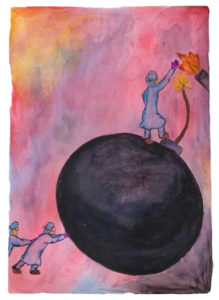
Thank you for front-line service. Your paintings speak volumes.
your pictures say a thousand words–esp. the one with a group gathering–keep on posting –great blog-moving pictures